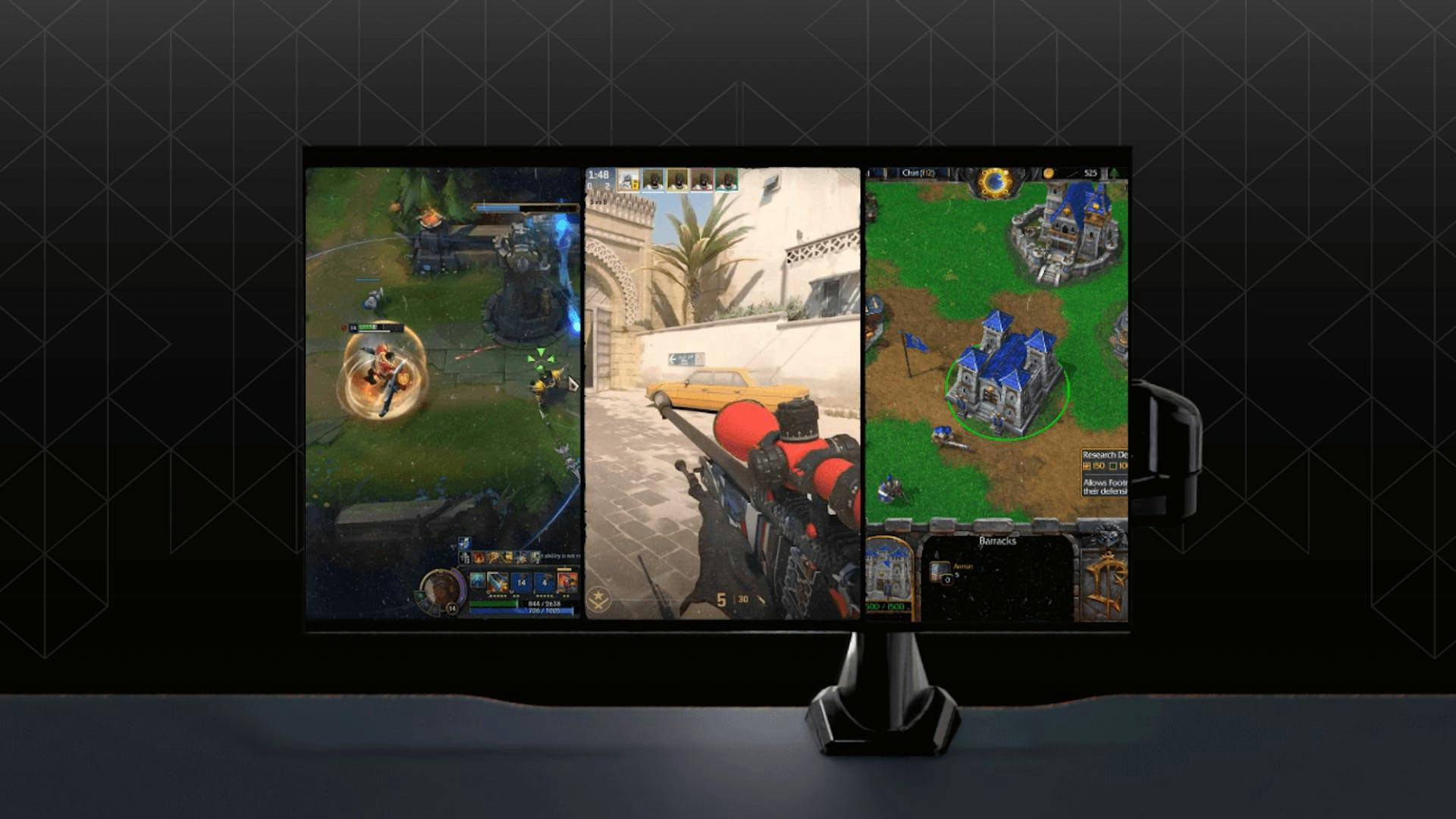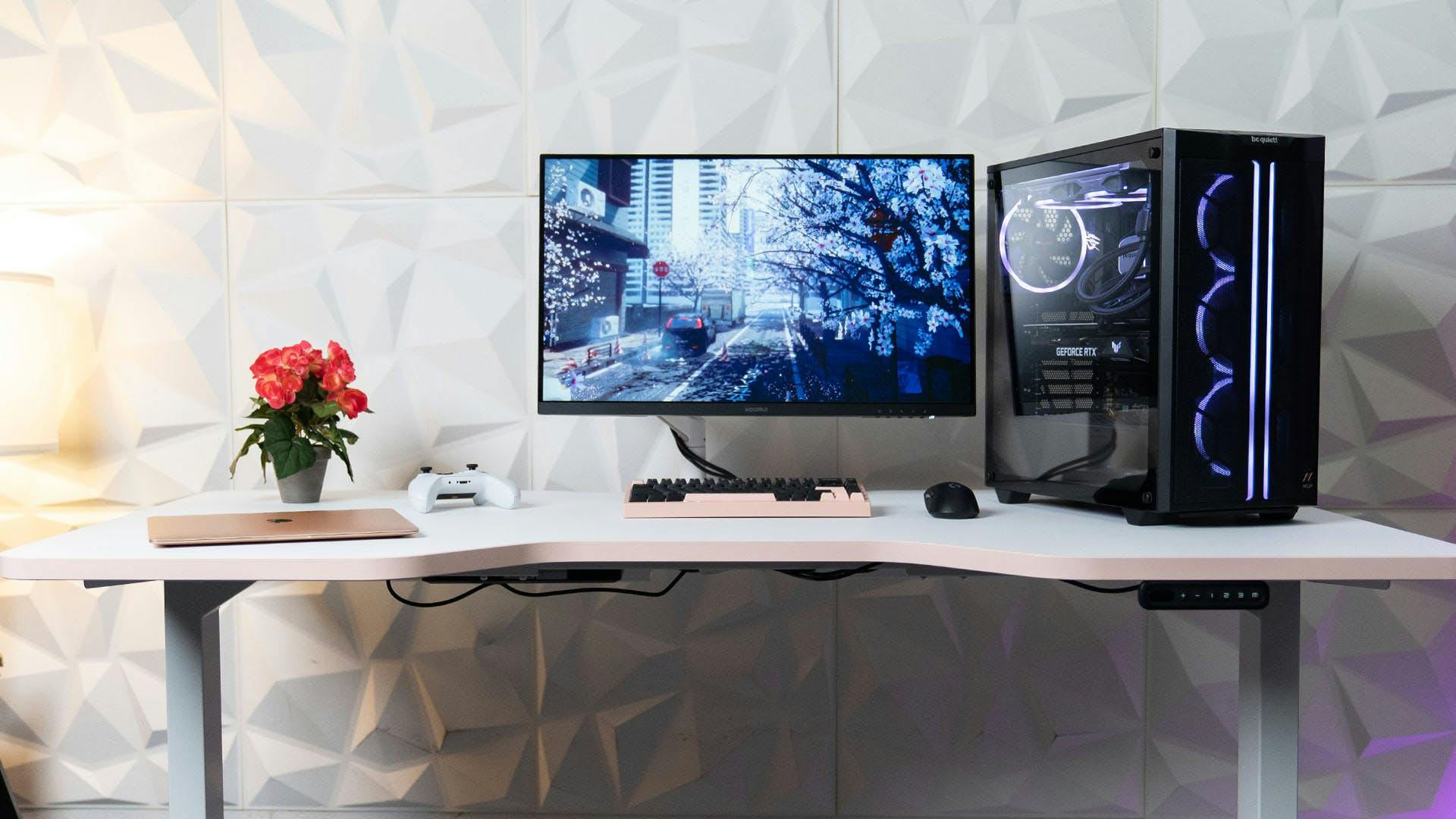
Gaming Monitor richtig einstellen
Hier erfährst du, wie du deinen Gaming-Monitor richtig einstellst, um die beste Spielerfahrung zu bekommen. Wir erklären dir alles über Platzierung, Kalibrierung und Optimierung für verschiedene Spiel-Genres.
We'll provide you with step-by-step instructions for managing cables in your home office or gaming setup. Whether you're a seasoned pro or just starting out, these tips and tricks will help you achieve the perfect desk cable management.

Tip: Label your cables! Using label tags or markers will help you identify each cable and make it easier to manage them in the future.
Gaming setups typically have more cables to manage than home office setups, due to the variety of devices involved such as monitors, gaming keyboards, gaming mice, gaming headsets, and consoles. Here are some additional tips for managing cables in your gaming setup:
While many of the cable management techniques we'll discuss in this article apply to both home office and gaming setups, there are some differences to keep in mind. Home office setups often require more flexibility since many people use laptops that need to be plugged in and unplugged frequently, whereas gaming setups are usually more stationary.
Using a docking station or USB hub can greatly aid in cord management and increase the flexibility of your workspace. By connecting all your peripherals, such as your keyboard, mouse, monitor, and other devices, to the docking station or hub, you can significantly reduce the number of cables that need to be plugged into your laptop. This not only creates a cleaner and more organized workspace but also makes it easier to plug and unplug your laptop without having to deal with a mess of tangled cables.
Using wireless devices is another way of eliminating the need for cords, such as a wireless keyboard and mouse. Unlike gaming setups, office work doesn't require hyper-responsive input, so there's no need to invest in expensive wireless hardware. This can save you money while providing the convenience and flexibility of a wire-free workspace.
If you use a standing desk, cable management can be a bit more challenging due to the added height and movement. Here are some tips for managing cables with an adjustable desk:
By the way: You can find out why a standing desk can be a good idea for you in our guide on gaming desks.
There are many different cable management solutions available on the market, ranging from basic cable ties to advanced cable management kits. Here are some options to consider:
Cable sleeves
As mentioned before, cable sleeves are a popular solution for keeping cables organized and out of sight. They can be easily cut to size and come in a variety of colors to match your setup.
Cable ties and straps
These are the simplest and most cost-effective cable management solutions. Use them to group cables together and keep them organized.
Cable clips and adhesive cable mounts
These solutions attach to the back of your desk or to the wall and provide a designated space for your cables to run through. They can help prevent tangling and keep your cables organized and out of sight.
Cable management kits
If you want a comprehensive solution for managing all of your cables, a cable management kit may be the way to go. These kits typically include cable sleeves, cable ties, cable clips, and other cable management accessories.
Cable trays
Trays are an efficient solution to manage cables under your desk. They help to keep your cables organized and tidy, which in turn makes your workspace look cleaner and more professional. By using a cable tray, you can prevent cables from becoming tangled, damaged or obstructing your legroom. Moreover, cable trays are versatile and can be used to hold other components such as power strips, adapters, and chargers. This allows you to keep all your power cables and electrical equipment in one place, making it easier to access them when necessary.
PC holder
Those can be a game-changer when it comes to cable management. By elevating your desktop computer off the ground and mounting it under your desk, you can create more space on your desktop and reduce cable clutter. This not only helps keep your workspace tidy but also makes it easier to access and manage your cables. Additionally, a PC holder can improve airflow around your computer, preventing it from overheating and reducing the risk of damage.
No matter what cable management solution you choose, make sure it's compatible with your setup and meets your specific needs. Take some time to research different options before making a purchase.
Once you've implemented a cable management system, it's important to maintain it to ensure that your cables stay organized and tangle-free. Here are some tips for maintaining your cable management:
In conclusion, proper cord management is an essential aspect of any well-organized and clutter-free workspace, whether it's for gaming or a home office setup. By following some simple tips, such as planning your cable layout, sorting cables by function, and using cable sleeves or trays, you can keep your cables organized, out of sight, and tangle-free. Additionally, using wireless devices and cable management solutions like cable trays and adhesive cable mounts can further enhance your cable management system. Ultimately, by investing some time and effort into cable management, you can create a more sleek and efficient work or gaming environment.